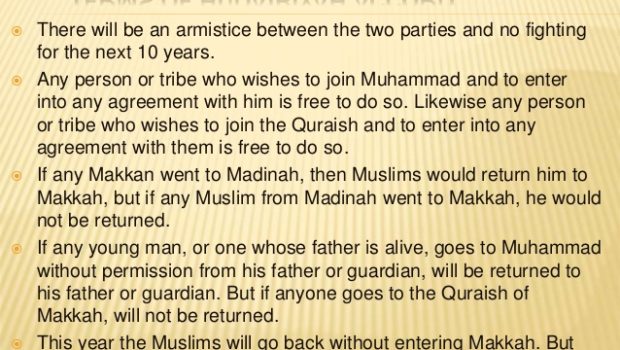There are mainly two major pilgrimages of Muslims i.e., Hajj and Umrah. Both of these…
The consent of Hudaibiya for Umrah
According to the ancient Islamic records, the worries and combat started when the people residing in Mecca i.e., the inhabitants of the palace and the Muslims force desired to accomplish the Hajj pilgrimage in Mecca. This was the time when the governors and the control of Mecca were in the hand of Qurayshites who does not allow any Muslim pilgrim outside of Mecca to visit the city to practice Hajj or Umrah. During 628 AD, Prophet Mohammed ﷺ desired to practice Umrah pilgrimage and in order to accomplish his wish, he started marching to Mecca from Medina and was accompanied by various tribes and his companions. However, on reaching the point of Hudaibiya, the entire force of Prophet Mohammed ﷺ was obstructed by the tribes of Quraysh. On asking from the Qurayshites, Prophet Mohammed ﷺ was answered as “the access of Muslims that wish to practice Hajj in holy Mecca was banned”.
Even after the continuous explanation by Prophet Mohammed ﷺ to the tribes of Quraysh that their desire was limited to practice Hajj and they would return back to Medina after the successful accomplishment of Umrah, the force of Quraysh did not permit them to enter Mecca. This incident then led to various arguments between the two groups of Muslims and Quraysh.
After this, an agreement that was known as the ‘treaty of Hudaibiya’ was made and signed by the Qurayshites and Muslims. As per the treaty, for the period till next ten years, the Muslims were given right to enter Kaaba for a total period of three days in a year and practice the pilgrimage. However, the companions of Prophet Mohammed in the year when a treaty was signed were prohibited to access Kaaba or practice Umrah and were compelled to go back to their native lands. In this way, the treaty regarding the rites of Muslims to practice Hajj in Mecca was signed and approved.



















